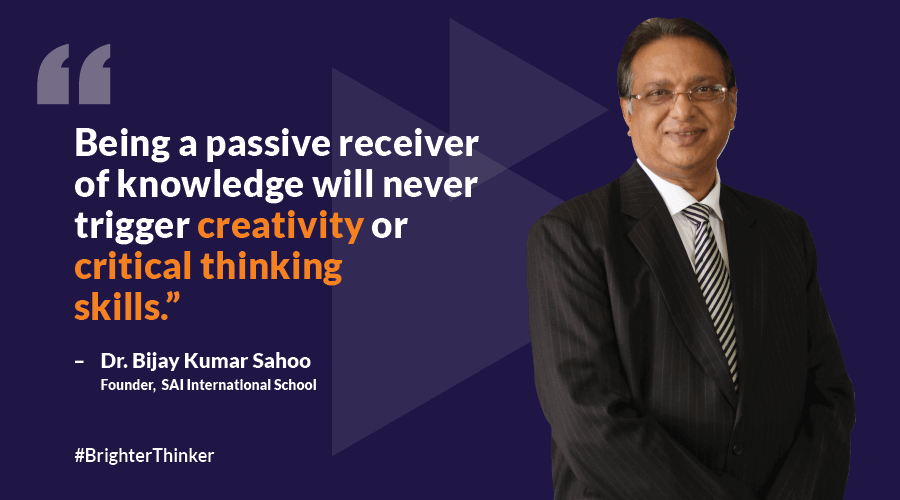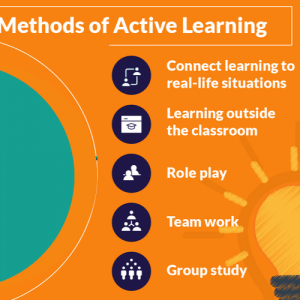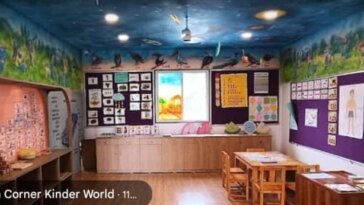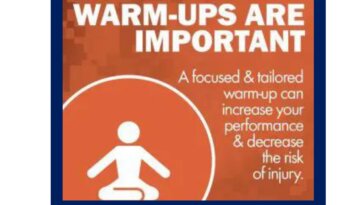Active Learning at the Core of the Education Process
Growing is complete, when learning becomes fun; the Gurukul System of education did the same by promoting ‘learning with doing’. Active learning emerged as a popular tool of learning then and continued and gaining importance till date. The aims and ideals of ancient Indian education were to promote simultaneous and harmonious development of the mind, body, intellect and spirit. When we go back to the ancient Indian education system, it is evident that the latest practise of Active Learning was the core of the education process.
What is Active Learning?
As I said, learning is complete when it is combined with fun. Active Learning techniques help students develop their cognitive and non- cognitive skills and focus on positive learning in the classroom. The goal of active learning emphasizes upon improving the attitude of the children before they begin their professional lives. Whereas, positivity gets lost somewhere in a traditional lecture. Active Learning involves the following elements-
- Analyzing, Defining, Creating and Evaluating as the nature of the learning process, which constitutes the highest retention rate of 90% in children
- Learning not merely by reading or watching but performing, designing or making working models
- Active learning doesn’t just happen; it takes place when a teacher creates an environment that makes the phenomenon of learning possible
- It ensures affirmatory and positive attitude towards learning in comparison to traditional lecture
Letting children learn while doing aids in positive and an interactive classroom sessions, where the students develop a positive attitude, creativity, critical thinking, adaptability, in-depth content knowledge while keeping their enthusiasm alive.
Why Active Learning is important at Meta-cognitive Stage of understanding?
The maximum development of children’s brains occurs during the tender ages of 6 to 8. It is the metacognitive stage of understanding when children are introduced to something new. Bringing in Active Learning techniques are the most important at this age.
Mind- During in the metacognitive stage, keeping children focused is a big challenge. They get distracted very often, stop paying attention to tasks that they feel are repetitive or have information they already believe they know and understand. While on the other hand, there may be other children who are not confident that they know anything, and might think they cannot learn when presented with an idea or topic.
In order to help them focus on the material being taught, we must follow the active method of learning which will not just boost the creativity, but also the critical thinking in children.
Body- Children in this stage also develop physically. Growing leads to certain discomforts in children, which is demonstrated by their inability to sit still, so to help them out the learning should be made such that they are not glued to a particular place.
The physicality of the transitions while doing an activity will help children see and feel and also help in developing their motor skills.
Soul- To bring about synergy between the body, mind and soul, children need to be focused and strengthen their inner soul. The introduction of activities like yoga and meditation in the curriculum helps build a high-spirited child.
Imparting 21st century skills through Active Learning

When we say Active Learning, its sure to ameliorate the traditional method of teaching. It leads to instilling and indoctrinating the 21st century learning skills of creativity, critical thinking, problem-solving, adaptability, communication and interpersonal skills through its various application-based activities in the classroom. Mapping students’ abilities and talents with the curriculum and enhancing the learning environment helps in bringing a new perspective in learning. Utilizing this aspect also creates a learning environment that allows individual students to thrive and flourish in all directions of learning possibilities.
How to Bring Active Learning in Your Classroom?
Experiential Learning – Through experiential learning, instructor utilizes to illustrate a topic. Experiential education is an immersive, participant-focused active approach to learning that engages learners. For me, it is more of learning through experiencing different outcomes of the same activity done in different circumstances.
The basic model of experiential learning cycle is, “Do, reflect and decide”.
Administering the 21st Century learning skill of critical and creative thinking, problem-solving, adaptability, communication and interpersonal skills.
In-depth content knowledge – Active learning facilitates the students to understand subject matter deeply and flexibly so that they can create useful cognitive maps, relate one idea to another, and address misconceptions. The teachers see how ideas connect across fields and relate it to everyday life. Such an understanding provides a foundation for pedagogical content knowledge that enables teachers to make ideas accessible to others. It helps students to become literate and enables them to use and enjoy their learning experiences. It also helps students to develop a broader understanding of new information.
Hyperbolic enthusiasm for learning in both students and instructors – When teachers make an extra effort to help students understand a topic in an active way, then both the teacher and the student share a bond of happiness that reverberates in the classroom, ensuring an active class.
When the teaching becomes innovative, then learning too is fun.
Going Beyond 4 Walls of Classroom
The pedagogy of Active Learning has been accepted in the mainstream, and higher education faculty are also emulating it in their processes and lectures. They are mapping this aspect to deliver better results enabling a happy and active environment of learning.
Last, but not the least, I believe learning does not just take place in the confined four walls of the classroom. It’s infinite and beyond boundaries that promotes innovation, creativity, and critical thinking in the students, leading to their holistic development.
Loved this article? Tell us in the comments.
Did you know?
The Cambridge Approach brings Brighter Thinking from around the world into the classroom to create #BetterLearningMoments. Cambridge learning resources use Active Learning as one of the core publishing principles to help students learn, retain and apply the knowledge gained in a classroom.














One Comment
Leave a Reply